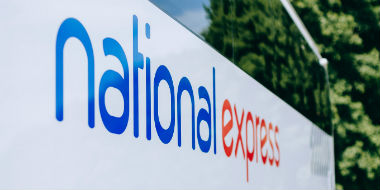AI
OpsMobil: Transforming Exploration with AI
July 25, 2018 | Written by: Ryan Tobber
Share this post:
Low commodity prices continue to flatten energy company profit margins, driving the search for lower cost structures and greater efficiencies. Nowhere is this pressure felt more keenly than in companies with aging assets.
 As wells, pipelines and facilities age, production declines and maintenance requirements grow. Producers need to implement rigorous disciplines to manage these assets, which can become liabilities as they approach abandonment and reclamation.
As wells, pipelines and facilities age, production declines and maintenance requirements grow. Producers need to implement rigorous disciplines to manage these assets, which can become liabilities as they approach abandonment and reclamation.
Three years ago, our company, Calgary-based OpsMobil Group Inc., made a strategic decision to operate exploration and production legacy assets. It now offers producers an outsourced turn-key solution for their mid- to late-life producing assets. To give OpsMobil a leg up in the industry, it teamed with IBM and joined the IBM Natural Resources Innovation Program to further enhance its delivery model and capitalize on AI capabilities.
The Business Model
OpsMobil provides a full-service model to exploration and production (E&P) companies for running their field assets. To do so, we enter into various commercial structures, including flowing boe (barrels of oil equivalent), time-based contracts or, in some cases outright purchase.
We characterize assets into three buckets: wells, pipelines, facilities. Each of those objects has a data history to it, from original design to construction, execution, drilling, operating history and a maintenance history. All this data needs to be leveraged to help us make the best decisions for optimizing production and costs.
Priority Focus
Our number one priority right now is to move to a complete digital environment. Then we can focus on production optimization—increasing production, increasing runtime, reducing downtime, reducing repairs and maintenance by moving to a more preventative, predictive maintenance model versus a reactive maintenance model.
But to realize a fully-enabled digital environment, we recognized quickly we first needed to move to a standardized platform that could handle our big data requirements and ingest multiple data and information sources for each of our assets. Essentially, we needed to build a platform that consolidated all of our data and enabled cloud processing power to run advanced analytics and AI-enabled capabilities.
Already aware of the benefits of moving to a digital environment, we realized we were a natural fit for the IBM Natural Resources Innovation Program. So we teamed with IBM Canada to implement an Intelligent Operations Centre (IOC) that enables a 360-degree operational view within the IBM Cloud environment.
The program will also facilitate a shift in OpsMobil’s internal management structure that will enable business transformation and re-alignment. As a result, as the collaboration advances, we will organize more around assets and their corresponding data rather company departments. The outcome will be that employees spend less time gathering bits and pieces of information from various departmental siloes and spend more time working with the information they need to make better-informed more accurate decisions.
This will enable fewer touch-points on equipment by multiple employees and grow the subject-matter expertise of employees enabling them to perform better, more accurate asset maintenance and operational programs to extend the life of their field assets.
What that means is that, as humans, we get to do what we like to do, rather than the repetitive stuff. In stead of spending 70 percent of our time searching and gathering information—which is, of course, static information at that point—and 30 percent of our time analyzing it, our hope is that, in the future, our employees will spend 70 percent of their time analyzing and making better-informed operational decisions.
Our 10-year arrangement with IBM recognizes the scope of the challenge of transforming to a fully enabled digital business, but OpsMobil is up for the challenge because the business value is clear.
It will take time, but we’ve created very defined deliverables, staged planning cycles, and are infusing AI capabilities into every aspect of our operating model. In addition, it should be noted that IBM’s subject experts aren’t just data subject matter experts. They’re also oil and gas industry experts, so we speak a common language.
Managing the data and history for 30 to 50 wells is quite possible, and most producers can deal with that on their own. But managing entire fields is a totally different challenge. High-level computing power and AI-infused insights will enable our technical operations employees to make real-time decisions based on historical and current information which will move us into a fully predictive digital operating environment.
To learn more visit the IBM Natural Resources Innovation Program

President & Chief Executive Officer, OpsMobil Group Inc.
It’s a Long and Open Road Ahead for Bus & Coach Travel
As one of the oldest forms of public transport, the bus occupies a special place in our hearts and lives. For more than a century, these vehicles have carried us to work, school, holiday destinations and festivals. But bus and coach companies can hardly afford to be sentimental nowadays. Technological innovations are creating new models […]
How a Hybrid Multicloud Strategy Can Overcome the Cloud Paradox
Public clouds have a lot to offer. Public clouds bring about agility, elasticity, and speed, which make a company’s IT shop become a lot more responsive to the needs of its business. By shifting workloads to the cloud, businesses can make great strides in reducing costs and boosting productivity. This allows them to focus on […]
Q&A with Hillery Hunter, VP & CTO IBM Cloud on IBM’s Software Transformation
A couple of weeks after having closed its landmark acquisition of Red Hat, IBM is announcing new cloud capabilities that will transform the way clients do business and accelerate their journey to the cloud. This includes: IBM Cloud Paks, Red Hat OpenShift on IBM Cloud, Red Hat OpenShift on IBM Z and LinuxOne, and Consulting […]


